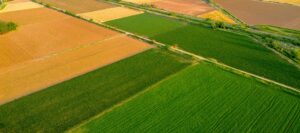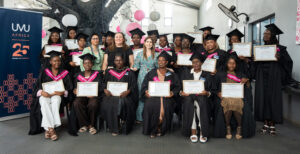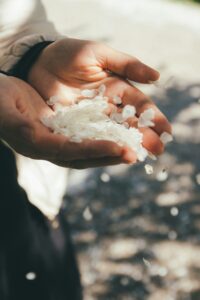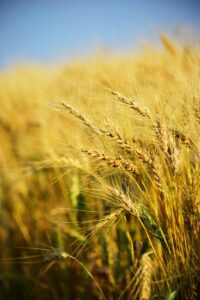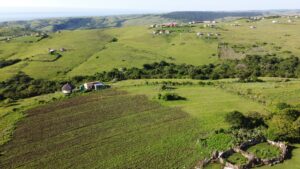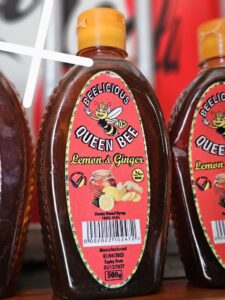Introduction
What are organics all about?
It’s about producing goods that work in harmony with, and not against, nature. The aim is to eradicate the use of harmful chemicals by making effective use of nature’s natural resources. All organic products are also free of genetically modified organisms (organisms that have had their basic gene structure modified by the addition of external organism genes).
What is Organic farming?
Organic agriculture is a production system that sustains the health of soils, ecosystems and people. It relies on ecological processes, biodiversity and cycles adapted to local conditions, rather than the use of inputs with adverse effects. Organic agriculture combines tradition, innovation and science to benefit the shared environment and promote fair relationships and a good quality of life for all involved.
Examples of organic farming methods include:
- Rotating crops between fields. This helps keep pests from building up and improves soil fertility.
- Planting selected herbs and flowers to attract beneficial insects which ward off unwanted pests.
- Using biological insecticides and make use of pests’ natural predators to control pest populations.
Organic farming produces nutrient rich, fertile soil which nourishes the plants. Keeping chemicals off the land protects water quality and wild life. It’s also about practising good animal welfare where everything from breeding, rearing and handling, to feeding of animals is strictly regulated and a free range lifestyle is implemented.
The soil
Organic farming refers to a system as a whole entity in ecological balance. Soil fertility is promoted by compost, cover crops, crop rotation, green manuring, minimum tillage, mulching, valuing of the biodiversity and avoiding synthetic chemical inputs. The principle is to treat the soil with respect knowing that the soil is the base for life on earth.
The basis of organic farming is to feed the soil and not the plant directly. Organic matter is this ‘feed’. The organic farmer is interested in balancing soil processes and is not as focused on balancing numbers as a consequence to soil analysis. A good organic soil structure is able to hold large amounts of nitrogen, phosphorus, calcium, iron and other micronutrients, essential in providing the plants with a balanced diet for healthy growth. A good soil structure will optimise water infiltration and retention and is also important in the control of erosion by wind and water.
Diseases and pests
The approach to pests and diseases by the organic farmer is that these are seen as symptomatic of imbalances in the soil’s fertility and health. There are too many pests and diseases as well as remedies to mention. The plant, like any living organism, develops a natural resistance to pests and disease attack. This resistance depends on the nutrition of the organism.
Organic meat
Organic animal suppliers have strict protocols that include treating their livestock humanely and allowing them to mature naturally. They are grazed naturally in a free-range environment minimising stress and producing high quality meat that is free from contaminants. It costs more to produce as the animals grow more slowly on natural grazing, hence more land is needed and higher interest costs are incurred. The certified farm has to produce 90% of the feed on the farm.
Certified Organic meat is a guarantee that meat has been produced free from any additives such as chemicals, antibiotics and hormones, and kept separate in the supply chain to the consumer.
As only natural, biodegradable products are used, water and the environment become cleaner. Farmers and their workers enjoy healthier working conditions. Organic animals are produced in harmony with the land, environment and native wildlife. This can only be good for future generations.
The health benefits
The hazards for human health of consuming products contaminated by harmful pesticides include increased risks of cancer, reproductive problems and neurological damage. Organically grown produce on the other hand is free of chemical residues, has a much higher vitamin and mineral content and is usually more flavoursome (which is why many top restaurants prefer to use organic ingredients).
Based almost completely on information from www.go-organic.co.za [website now defunct] with some input from other role players.
Organic agriculture could provide employment opportunities for millions of small farmers and for women and youth groups, together with economic and financial benefits. The purpose of the sector’s National Policy On Organic Production discussion document is to map out the way to make this a reality.
Certification
Consumers and retailers want strong assurances of food safety and genuine organic methods. Why should you certify?
- Products look the same as conventional products.
- Consumers have a right to know that production has been organic (especially if paying more).
- To protect farmers who are following the rules from the bad reputations of those who are not.
- To obtain access to high value markets, in South Africa and abroad.
Certification is a way to ensure that products are in line with local and international standards set.
Based almost completely on information from www.go-organic.co.za [website now defunct] with some input from other role players.
The South African organic certification landscape consists of the following:
| 1st party | A first party organic certification is a “self-claim” which is not verified by outside parties. It covers a direct relationship between a farmer and a consumer whereby you visit the farm or discuss with the farmer and are satisfied with his claims. |
| 2nd party | Second party organic certification in South Africa is assured by a Participatory Guarantee System (PGS) and works with short supply chains. PGS provides a locally focused quality assurance system that certifies producers based on active participation. PGS SA is a SAOSO partner. See www.pgssa.org.za. |
| 3rd party | Third party organic certification is required for long supply chains and export. The processes are certified annually by an accredited certifying body (ACB) to specific organic standards. |
SAOSO (South African Organic Sector Organisation) has developed a local Standard for Organic Production and Processing which is included in the IFOAM Family of Standards. Chapters 1, 2 and 3 are applicable to all crop and animal production systems. Chapters 8, 9 and 10 are applicable to all systems, including processing. Appendix 9 deals specifically with PGS systems.
The SAOSO organic standard is verified locally. Consumers can recognise compliance with the standard represented by two trademarked logos: ZA ORGANIC CERTIFIED and SA ORGANIC PGS CERTIFIED.
Further reference:
- Refer to the “Organic Certification” option at www.saoso.org.
- See the useful notes at www.faithful-to-nature.co.za/Organic-Certification.
Do you want to be certified organic?
If you would like to consider being third party certified, refer to the infographic at www.saoso.org/organic-certification.
Participatory Guarantee Systems (PGS)
An alternative start-up strategy for emerging farmers is PGS. PGS only works for small local markets. It is a simple, non-bureaucratic way to start building a quality management system. Visit www.pgssa.org.za.
Agro-ecology
Agro-ecosystems are communities of plants and animals interacting with their physical and chemical environments that have been modified by people to produce food, fibre, fuel and other products for human consumption and processing. Agro-ecology looks at these agro-ecosystems, including all environmental and human elements. An area used for agricultural production, e.g. a field, is seen as a complex system in which ecological processes found under natural conditions also occur, e.g. nutrient cycling, predator/prey interactions, competition and symbiosis and succession changes. The idea is that by understanding these ecological relationships and processes and working with them, production will be improved, with fewer negative environmental or social impacts, and fewer external inputs.
Agro-ecology practices include:
- Crop rotation: Temporal diversity incorporated into cropping systems, providing crop nutrients and breaking the life cycles of several insect pests, diseases and weed life cycles.
- Polycultures: Complex cropping systems in which two or more crop species are planted within sufficient spatial proximity to result in competition or complementation, thereby enhancing yields.
- Agroforestry systems: An agricultural system in which trees are grown together with annual crops and/or animals, resulting in enhanced complementary relations between components increasing multiple uses of the agro-ecosystems.
- Cover crops: The use of pure or mixed stands of legumes or other annual plant species under fruit trees for the purpose of improving soil fertility, enhancing biological control of pests and modifying the orchard microclimate.
- Animal integration in agro-ecosystem aids in achieving high biomass output and optimal recycling.
All of the above diversified forms of agro-ecosystems share in common the following features:
- Maintain vegetative cover as an effective soil and water conserving measure, met through the use of no-till practices, mulch farming and use of cover crops and other appropriate methods.
- Provide a regular supply of organic matter through the addition of organic matter (manure, compost, and promotion of soil biotic activity).
- Enhance nutrient recycling mechanisms through the use of livestock systems based on legumes, etc.
- Promote pest regulation through enhanced activity of biological control agents achieved by introducing and/or conserving natural enemies and antagonists.
Source: Agro-ecology: alternative production systems, a brochure that can be found at www.nda.gov.za.
Further reference:
- The UN Food and Agriculture Organsation (FAO) page on agroecology, www.fao.org/agroecology/en/
- Agroecology Coalition https://agroecology-coalition.org
- Agroecology and Sustainable Food Systems Journal – see www.tandfonline.com/toc/wjsa21/current
- Download the Biowatch publication Agroecology is Best Practice: Biowatch South Africa’s work with smallholder farmers. All Biowatch publications (including fact sheets, training materials, research papers and handouts) are available at www.biowatch.org.za
- Read the Institute of Natural Resources (INR) studies like “Agro-Ecology: Investigating Micro-catchment Rainwater Harvesting and Conservation” at www.inr.org.za.
Greens EFA. 2017. Agroecology explained to children....parents can watch.
Biodynamics
Biodynamics is an approach to sustainable organic agriculture inspired by the philosophy of Anthroposophy as developed by Rudolf Steiner in the late 19th – early 20th centuries in Europe.
In the term “biodynamic” the bio refers to the biological (organic) aspects of agriculture (i.e. the physical soil, water, plants, animals etc.); whereas the dynamic refers to the cosmic formative forces that underlie the physical world. Biodynamic agriculture respects the fact the whole of the universe, i.e. the planet earth and the whole surrounding cosmic space with all its heavenly bodies, forms one indivisible whole and should be managed as such.
Biodynamic farmers use of range of specially formulated herbal and/or organic preparations to enhance soil, plant and animal life, fertility and vitality. They develop their farms into unique and distinct individualities that use a minimum of external inputs. Their aim is to produce the highest quality food, fibre and timber with no or very limited negative impact on the environment. In an effort to create a harmonious whole, the farmer works with the natural and cosmic cycles, rhythms and forces that regulate life on earth.
For further information visit https://bdaasa.org.za, website of the Biodynamic Agricultural Association of Southern Africa (BDAASA).
Further reference:
- www.biodynamics.com – Biodynamic Farming and Gardening Association (USA)
- Sign up for the Biodynamic Newsletter. Contact BDAASA (details under Ässociations involved” heading).
- www.biodynamics.com – Biodynamic Farming and Gardening Association (USA)
- Bio-Dynamic Gardening. John Soper. Bio-Dynamic Agricultural Association. ISBN 0 – 9503780 – 7 – 0
- The Bio-Dynamic Farm. Herbert H Koepf. Anthroposophic Press. ISBN 0 – 88010 – 172 – 54.
- Agriculture. Rudolph Steiner. Sophia Books ISBN 9781855841130
OrganicNation. 2010. What Is Biodynamic Farming?
Permaculture
See separate page.
Regenerative Agriculture
For now this falls here on the “Organic farming” page (watch out for a future, separate page!) Regenerative Agriculture includes Conservation Agriculture (no-till), and use of cover crops, crop rotation strategies, biocontrol, biodiversity and ecosystem services.
Further reference:
- View www.regenagsa.org.za, web page of the Regenerative Agriculture Association of South Africa.
- Moyer J., Smith A., Rui Y. & Hayden J. 2020. Regenerative Agriculture and the Soil Carbon Solution. Rodale Institute. Available at https://rodaleinstitute.org/wp-content/uploads/Rodale-Soil-Carbon-White-Paper_v8.pdf
- Cullis C. 2020, October 21. “Regenerative agriculture – an idea 12 000 years in the making”. 702. Available at www.702.co.za/articles/399385/regenerative-agriculture-an-idea-12-000-years-in-the-making-bizun
- Subscribe to Landbouweekblad’s Graan & Herlewingslandbou newsletter. See www.landbou.com.
- Kriel G. 2019, October 6. “Learning about regenerative agriculture”. Farmer’s Weekly. Available at www.farmersweekly.co.za/crops/field-crops/learning-about-regenerative-agriculture/
- Read the thought-provoking “If Agroecology is so great, why aren’t all farmers doing it?” at www.huffingtonpost.com/eric-holt-gimenez/if-agroecology-is-so-grea_b_10867084.html. It takes as its starting point the FoE and IPES studies.
Jimi Sol. 2020. What is Regenerative Agriculture?
Vegan Organic farming
Most farmers are dependent on chemicals and animal by-products – and even those specialising in organic farming use animal manures and slaughterhouse by-products (bone meal, compost etc). How to go about farming without animals or animal by-products?
Further reference:
- Visit the Vegan Organic Network website, https://veganorganic.net
- EOU. 2023. Veganic Farming: Sustainable Agriculture Practices. Available at https://online.eou.edu/resources/article/veganic-farming-importance-of-sustainable-agriculture
- Pointing C. 2023, September 5. “Is Vegan Regenerative Agriculture the Key to Building a Sustainable Future of Food?”. VegNews. Available at https://vegnews.com/vegan-news/vegan-regenerative-agriculture-sustainable-future-food
International business environment
For current statistics on organic farming, visit www.fibl.ch and the other websites listed under this heading.
- The International Federation of Organic Agricultural Movements (IFOAM), the international umbrella body for organic farming, produces an annual report. Find it on https://www.ifoam.bio.
- Biodynamic Federation Demeter International (BDFI) https://demeter.net
- The Research Institute of Organic Agriculture (Forschungsinstitut für biologischen Landbau – FiBL) is “the world’s leading information and documentation centre for organic agriculture”. See www.fibl.ch.
- www.organic-world.net – site maintained by the Swiss Research Institute of Organic Agriculture (FIBL).
- Established by the IFOAM, the International Organic Accreditation Service (IOAS) serves to develop IFOAM accreditation and to build production and markets globally. Visit https://ioas.org.
- Organic Trade Association (OTA), www.ota.com
- The International WWOOF (World Wide Opportunities on Organic Farms) Association is dedicated to helping those who would like to volunteer on organic farms internationally. Valuable experience can be gained like this, and it increases communication between the organic community internationally. See https://wwoof.net.
- Network of Organic Agricultural Research in Africa (NOARA) – www.facebook.com/noara.noara.967422/
Other websites
- Alliance for Food Sovereignty in Africa (AFSA) https://afsafrica.org
- Find the Organic Agriculture: African Experiences in Resilience and Sustainability document on the FAO Organic Agriculture Programme pages. Find the Agroecology page at www.fao.org/agroecology/en/.
- www.biotropic.com – specialists in the worldwide import and sales of organic fruit, vegetables and processed food
- Rodale Institute is dedicated to pioneering organic farming through research and outreach. Visit https://rodaleinstitute.org.
- UK Soil Association – www.soilassociation.org.
- www.dal.ca/faculty/agriculture/oacc/en-home.html – Organic Agriculture Centre of Canada
- https://ofrf.org – Organic Farming Research Foundation (USA)
- www.gardenorganic.org.uk – the UK’s “Leading organic growing charity”
- Find the international directory of organic food companies at www.organic-bio.com/en/directory/.
- Amfri Farms, organic farming in Uganda, www.african-organic.com
- Nawiri Agricultural Programme https://nawiriagriculture.netlify.app
- https://polyfacefarms.com – the farmer who has gone “beyond organic” (for those of you who saw the movie Food Inc)
- Read about studies done by Friends of the Earth (FoE) and the International Panel of Experts on Sustainable Food Systems (IPES) under the “Websites & publications” heading.
- Farming First, “A global coalition for sustainable development”, https://farmingfirst.org
- Farmer’s Footprint https://farmersfootprint.us
- USDA National Organic Program (NOP) www.ams.usda.gov/about-ams/programs-offices/national-organic-program
Local business environment
South African organic farmers produce a large variety of produce. These include various cereals; vegetables, roots and tubers; herbs and spices; fruits, nuts and Rooibos tea. The largest fruit crops in terms of hectares were bananas, avocado pears and mangoes, while the largest vegetable crops were cucurbits, tomatoes, asparagus, brassicas and potatoes. Organic wine and olive oil is also produced and organic dairy farming has just started in some provinces.
Organic products produced in South Africa are sold at both local and export markets. Exports principally sent to European markets, United States and Far East include vegetables, plant products, processed fruits, sugar, wine, essential oils, table grapes and Rooibos tea. To enable international market access for South African organic exports, any local legislation governing organic agriculture in South Africa should be regularly updated to be aligned with and compliant to prevailing standards in international markets.
Within South Africa, the products are usually sold in supermarkets, as home deliveries, directly from the farmer, through specialised restaurants and through special organic markets. Some schools are also beginning to serve organic foods. There is a robust but underdeveloped, local market for organic produce with limited premiums for organic products. Local retailers sell reasonable amounts of organic produce to the South African public.
Source: The National Policy On Organic Production discussion document; www.saosa.org.
“Enough food is in fact produced to feed the global population, but much of it goes to feeding cattle (who aren’t designed anyway to eat maize and soy!) Our methods of production cause environmental damage. Organic farming outperforms conventional farming on all metrics, while at the same time producing food that nourishes humans and heals the earth”. A standard South African organic farmer perspective.
Small-scale farmer news
The main criticism levelled at organic agriculture is that it cannot feed the world. But this is a failure of the economic system in which we operate rather than the inherent capacity of the approach. While it is true that organic agriculture cannot produce massive surpluses by forcing super-growth, over the long term productivity equals out: organic production is more consistent over time; it is more environmentally sustainable and it creates local economic stability.
Can community-based organic agriculture play a meaningful role in achieving food security? One of its biggest advantages is that organic agricultural methods can easily be transferred to people with few or no previous skills. In just four days, anyone can obtain the basic skills which, if applied (with some guidance) over two seasons, will result in a permanent ability to grow productive survival or subsistence gardens at low cost.
Although more advanced levels of organic farming require much more training, with the basics in place it is possible to kick-start self-sustaining community farming and gardening in uncontested land such as backyard plots, rural smallholdings, school yards, in servitude and commonage land. Basic-level training can therefore provide a foundation for localised food security among the poor.
Organic farming and gardening is most readily adaptable to poor or emerging farmers who cannot easily access costly external inputs and high-tech training. It has the added advantage of being spontaneously community building and because it uses human-scale technology, it is also labour intensive and has the potential – beyond meeting subsistence needs – to create jobs. It is now a proven fact that a reasonable living, after costs, is possible off 500 square metres or less, selling organic vegetables at street prices.
Here in South Africa there is now a grassroots organic-friendly farming movement among the poor, involving many thousands who are mobilising to defeat food insecurity. Leading examples are the Vukuzenzela Urban Farmers Association (VUFA) in Cape Town, the Master Farmers Association (MFA) in the Eastern Cape and the Western Cape Ubuntu Farmers Association (WEKUFU).
Source: adapted from an article by Rob Small from ABALIMI in the CSI Handbook 8th edition, published by Trialogue
National strategy and government contact
The absence of an official certification system in place hindered the organic sector for nearly two decades. Draft legislation was in place, but various technicalities delayed recognition. The SAOSO Standard for Organic Production and Processing is included in the IFOAM Family of Standards. Find it at www.saoso.org/organic-certification/.
Read the Parliamentary Monitoring Group (PMG)‘s “Agroecology Strategy and Plan for South Africa: stakeholder input” (2023, March 14) at https://pmg.org.za/committee-meeting/36544
Department of Agriculture www.nda.gov.za
The Directorate Food Safety and Quality Assurance is inter alia responsible for setting quality standards (regulations) for certain agricultural products in terms of the Agricultural Product Standards Act, 1990 (Act No. 119 of 1990).
The Directorate Plant Production is responsible for developing organic production policy and the purpose of the policy is to create a broad framework for the development of a prosperous organic sector that is globally competitive and capable of supporting government’s commitments towards poverty alleviation, job creation, food security and economic development.
Role players
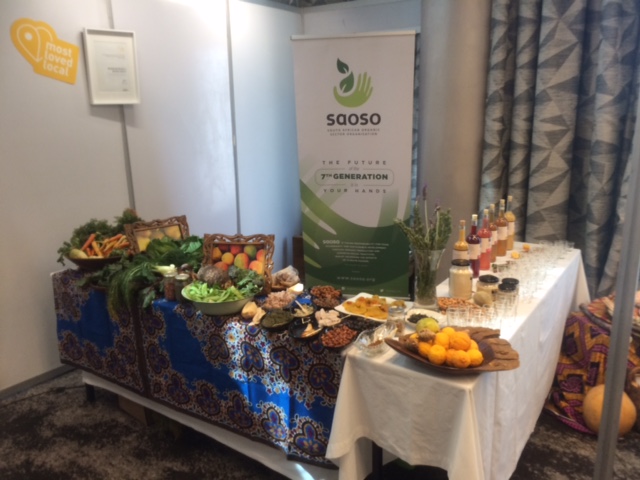
View the Premium Listings below (scroll down or click on “Premium Listings” on the Table of Contents to the right).
FURTHER REFERENCE:
- See also other relevant pages on this website e.g. “Compost and organic fertiliser”, “Earthworms and Vermicompost”, “Permaculture”, “Biocontrol” etc.
Some organic markets
Western Cape
- Find the links to several organic markets at http://capemarkets.co.za
- Stellenbosch Fresh Goods Market – www.slowmarket.co.za
- Refer to “The Best Organic Food Shops in Cape Town“.
Gauteng
- Bryanston Organic Market – www.bryanstonmarket.co.za
- Irene Village Market – www.irenemarket.co.za
KwaZulu-Natal
- Karkloof Market – www.karklooffarmersmarket.co.za
- Pietermaritzburg Farmers Market – www.facebook.com/maritzburgfarmersmarket/
Training and research
- Organic farming is included as a priority in AgriSETA planning. Visit www.agriseta.co.za.
Websites and publications
Visit the websites listed earlier on this page.
- Visit Facebook pages like the Organic Farmers of Africa and Regenerative Agriculture Association of South Africa.
- Sign up for the Biodynamic Newsletter. Contact BDAASA (details under the “Role players” heading).
- Read the Institute of Natural Resources (INR) studies “Study to Develop a Value Chain Strategy for the Growth and Development of Organic Agriculture in South Africa” and “Agro-Ecology: Investigating Micro-catchment Rainwater Harvesting and Conservation” at www.inr.org.za.
- Subscribe to the Landbouweekblad’s Graan & Herlewingslandbou newsletter. See www.landbou.com.
- Find the South African vegan directory at www.vegansa.com.
- The study released by Friends of the Earth (FoE) called “Farming for the future: Organic and agroecological solutions to feed the world” is essential reading. A second study, done by the International Panel of Experts on Sustainable Food Systems (IPES), is titled “From Uniformity to Diversity: A paradigm shift from industrial agriculture to diversified agroecological systems”.
- The Surplus People Project did a study Market Research on the organic and natural products and fynbos industry with an emphasis on how to facilitate entry. Visit http://spp.org.za.
Some publications
- Mars R. 2024. The Basics of Regenerative Agriculture. White River Junction (USA): Permanent Publications.
- Wynberg R. 2024. African Perspectives on Agroecology: Why farmer-led seed and knowledge systems matter. Practical Action Publishing. Available at https://practicalactionpublishing.com/book/2698/african-perspectives-on-agroecology
- Biowatch farmers speak out about living and thriving in troubled times 2020–2022: COVID-19, social upheavals, unrest, extreme weather … Find Stories of Resilience Built Through Agroecology on the Biowatch website, available as a download at www.biowatch.org.za/download/stories-of-resilience
- Contact Lindros for their publications like Organic Agriculture Handbook (written for South African conditions), and Global Health in Crisis, the Answer lies in the Soil. Visit www.lindros.co.za.
- Auerbach R. (ed). 2019. Organic Food Systems: Meeting the Needs of Southern Africa. Oxforshire: CABI.
- Coleman E. 2018. The New Organic Grower (3rd Edition). Chelsea (US): Chelsea Green Publishing Company.
- Beck A, Kretzschmar U & Schmid O (Eds). 2006. Organic Food Processing – Principles, Concepts and Recommendations for the Future. Available at https://orgprints.org/id/eprint/8996/1/processing.pdf
- Soil Fertility – Renewal and Preservation. E. Pfeiffer. The Lanthorn Press. ISBN 0 906155 12 6
- Pfeiffer E. 1938. Bio-Dynamic Farming and Gardening: Soil Fertility Renewal and Preservation (F. Heckel, Trans.). New York: Anthroposophic Press.
- Remer N. 1996. Organic Manure: Its Treatment According to Indications by Rudolf Steiner. Santa Barbara (CA): Mercury Press.
- Balfour EB. 1951. The Living Soil. London: Faber and Faber.
- Turner N. 1952. Fertility Farming. London: Faber and Faber.
- Hills LD. 1968. Fertility without fertilizers. Henry Doubleday Research Association.
- De Baïracli Levy J. 1991. The Complete Herbal Handbook for Farm and Stable. Farrar, Straus and Giroux. New York: Farrar, Straus and Giroux.
- MacLeod G. 1996. The Treatment of Cattle by Homoeopathy. Grand Junction (CO): CW Daniels UK.
- Koepf HH. 2006. The Biodynamic Farm: Agriculture in Service of the Earth and Humanity. New York: SteinerBooks.
- Steiner R. 1974. Agriculture: A Course of Eight Lectures. Ithaca (NY): Bio-Dynamic Agricultural Association.
- Find the recommended reading suggestions at http://livingseeds.co.za.
Some articles
- Read the blogs “Thanda’s Agroecology Initiative Aims to Shift the Future for Young South Africans”, “SA’s organic products boom: a world of opportunity for businesses” and “I am a Farmer: FTFA’s Campaign to Change the Face of Agriculture in South Africa” at www.agribook.co.za.
- Wynberg R. 2025, January 23. “Industrial scale farming is flawed: what ecologically-friendly farming practices could look like in Africa”. The Conversation. Available at https://theconversation.com/industrial-scale-farming-is-flawed-what-ecologically-friendly-farming-practices-could-look-like-in-africa-245579
- Staff Reporter. 2024, November 27. “OWSA sets stage for SA’s organic wine future”. Food for Mzansi. Available at www.foodformzansi.co.za/owsa-sets-stage-for-sas-organic-wine-future
- Jansen C. 2024, October 18. ‘Woolworths introduces farmers to “the wonderful world of biological and organic inputs”’. FreshPlaza. Available at www.freshplaza.com/africa/article/9670071/woolworths-introduces-farmers-to-the-wonderful-world-of-biological-and-organic-inputs
- Tembo P. 2024, August 14. “Agroecology: Transforming agriculture with nature’s wisdom”. Food for Mzansi. Available at www.foodformzansi.co.za/agroecology-transforming-agriculture-with-natures-wisdom
- Reporter. 2024, April 11. “Woolworths launches Farming for the Future campaign to tackle climate challenges”. Bizcommunity. Available at www.bizcommunity.com/article/woolworths-launches-farming-for-the-future-campaign-to-tackle-climate-challenges-231177a
- Reporter. 2024, January 24. “South Africa’s ZZ2 and Marais farms embrace nature-inclusive agriculture”. Fresh Plaza. Available at www.freshplaza.com/africa/article/9594868/south-africa-s-zz2-and-marais-farms-embrace-nature-inclusive-agriculture
- Green E. 2023, October 4. “Demand for organic labels on the rise, trust & transparency deemed crucial motivators”. Food Ingredients 1st. Available at www.foodingredientsfirst.com/news/demand-for-organic-labels-on-the-rise-trust-transparency-deemed-crucial-motivators.html
- Koopman V. 2023, June 2. “Regenerative agriculture is essential to ongoing sustainability for Danone South Africa”. IOL. Available at www.iol.co.za/business-report/opinion/regenerative-agriculture-is-essential-to-ongoing-sustainability-for-danone-south-africa-1ebb70e1-b3d9-4157-b369-28c748e75cf8
- Fredericks R. 2023, May 25. “#FarmingfortheFuture: Restore Africa Funds on the importance of regenerative agriculture”. Bizcommunity. Available at www.bizcommunity.com/Article/196/643/238558.html
- Reporter. 2022, January 22. “How to Get Organic Certification”. SA Smallholder. Available at https://sasmallholder.co.za/2022/01/21/how-to-get-organic-certification/
- Jansen C. 2022, January 19. “The conversion to organic among South African growers is (at last) taking off”. FreshPlaza. Available at www.freshplaza.com/article/9391329/the-conversion-to-organic-among-south-african-growers-is-at-last-taking-off/
- Reporter. 2022, January 18. “Organic Crop Production”. SA Smallholder. Available at https://sasmallholder.co.za/2022/01/18/crops-livestock-organic-farming/
- Reporter. 2021, August 25. “Meat alternative brand Future Farm arrives in South Africa”. Bizcommunity. Available at www.bizcommunity.com/Article/196/162/219387.html
- Reporter. 2021, August 10. “South Africa: Organic fruit farming hampered by limited data”. FreshPlaza. Available at www.freshplaza.com/article/9343207/south-africa-organic-fruit-farming-hampered-by-limited-data/
- Reporter. 2020, November 2. “Checkers deal with Farmer Angus Eggs boosts black-owned regenerative agriculture”. Bizcommunity. Available at www.bizcommunity.com/Article/196/162/209937.html
- Coleman A. 2019, September 23. “‘Agriculture must stop chemical warfare against insects’”. Farmer’s Weekly. Available at www.farmersweekly.co.za/agri-news/south-africa/agriculture-must-stop-chemical-warfare-against-insects/
- Loki, R. 2018, November 3. “How Can You Talk to Kids About Factory Farming? These Books Can Help”. EcoWatch. Available at www.ecowatch.com/how-to-talk-kids-about-factory-farming-2616607207.html
- Kriel, G. 2018, June 29. “Farming with nature in the Sandveld”. Farmer’s Weekly.
- Eisenstein, C. 2018, May 3. “Charles Eisenstein: Opposition to GMOs is neither unscientific nor immoral”. Ecologise. Available at www.ecologise.in/2018/05/03/charles-eisenstein-opposition-to-gmos-is-neither-unscientific-nor-immoral/
- Caradonna, J. 2018, April 24. “Organic agriculture is going mainstream, but not the way you think it is”. SAPPO. Available at www.sapork.co.za/2019/01/organic-agriculture-is-going-mainstream-but-not-the-way-you-think-it-is/ [organic farming practices are influencing mainstream farming] [PDF done]
- Moeller, N and Pimbert, M. 2018, March 26. “We know how food production needs to change if crisis is to be avoided – so why isn’t this happening?”. The Conversation. Available at https://theconversation.com/we-know-how-food-production-needs-to-change-if-crisis-is-to-be-avoided-so-why-isnt-this-happening-92903
- Connell, J. 2018, March 22. “‘Cows carry flesh, but they carry personality too’: the hard lessons of farming”. The Guardian. Available at www.theguardian.com/news/2018/mar/22/cows-carry-flesh-but-they-carry-personality-too-the-hard-lessons-of-farming
- Reporter. 2017, December 5. “SA shoppers’ penchant for healthy, organic food an opportunity for brands”. Bizcommunity. Available at www.bizcommunity.com/Article/196/168/170915.html
- Akitanda, C. 2017, July 24. “Organic farming gains popularity”. Bizcommunity. Available at www.bizcommunity.com/Article/410/358/165104.html
- Claassen, J. 2014, July 7. “Farmer Angus – focusing on people, planet and profit”. Farmer’s Weekly. Available at www.farmersweekly.co.za/animals/cattle/farmer-angus-focusing-on-people-planet-profit
- Find the many articles on the Ecowatch website, www.ecowatch.com. These include “Regenerative Agriculture can save the planet” and “Can Organic Farming Feed the World”, an overview of the FoE (see above) study.
- Read the thought-provoking “If Agroecology is so great, why aren’t all farmers doing it?” on the Huffington Post website.
- Meyer, N. 2013, December 14. “UN Report Says Small-Scale Organic Farming Only Way to Feed the World”. Technologywater.Available at: www.technologywater.com/post/69995394390/un-report-says-small-scale-organic-farming-only
- Contact Hans E Klink for some excellent writing on organic farming. Speak to him at 021 851 2403 or write to heklink [at] mweb.co.za. Articles include: (i) Ten good reasons for organic agriculture (ii) Organic regulation and certification (iii) Organic management (iv) Organic agriculture in its economic context (v) Healthy soils (vi) Organic pest and disease control

